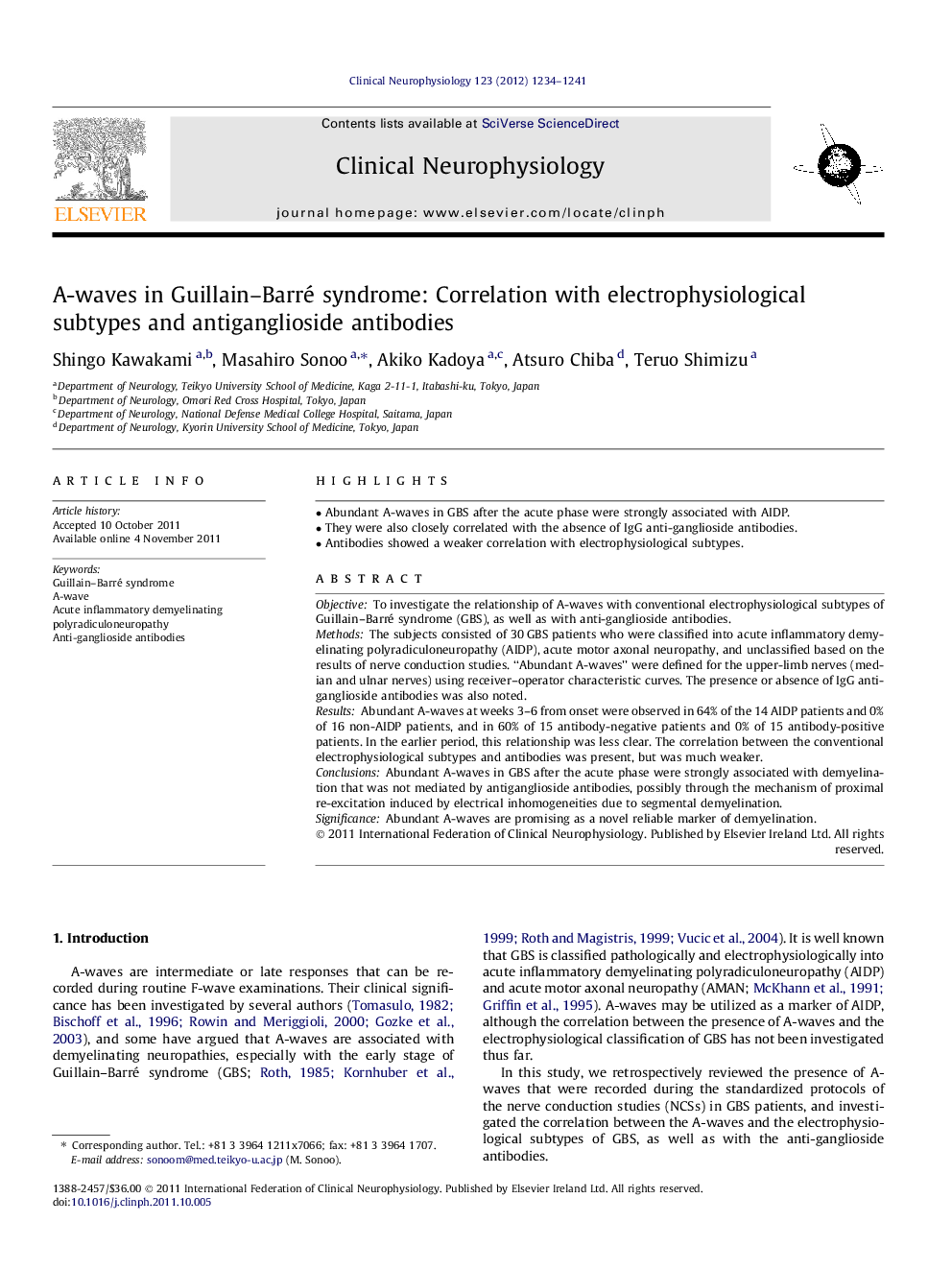| Article ID | Journal | Published Year | Pages | File Type |
|---|---|---|---|---|
| 3045024 | Clinical Neurophysiology | 2012 | 8 Pages |
ObjectiveTo investigate the relationship of A-waves with conventional electrophysiological subtypes of Guillain–Barré syndrome (GBS), as well as with anti-ganglioside antibodies.MethodsThe subjects consisted of 30 GBS patients who were classified into acute inflammatory demyelinating polyradiculoneuropathy (AIDP), acute motor axonal neuropathy, and unclassified based on the results of nerve conduction studies. “Abundant A-waves” were defined for the upper-limb nerves (median and ulnar nerves) using receiver–operator characteristic curves. The presence or absence of IgG anti-ganglioside antibodies was also noted.ResultsAbundant A-waves at weeks 3–6 from onset were observed in 64% of the 14 AIDP patients and 0% of 16 non-AIDP patients, and in 60% of 15 antibody-negative patients and 0% of 15 antibody-positive patients. In the earlier period, this relationship was less clear. The correlation between the conventional electrophysiological subtypes and antibodies was present, but was much weaker.ConclusionsAbundant A-waves in GBS after the acute phase were strongly associated with demyelination that was not mediated by antiganglioside antibodies, possibly through the mechanism of proximal re-excitation induced by electrical inhomogeneities due to segmental demyelination.SignificanceAbundant A-waves are promising as a novel reliable marker of demyelination.
► Abundant A-waves in GBS after the acute phase were strongly associated with AIDP. ► They were also closely correlated with the absence of IgG anti-ganglioside antibodies. ► Antibodies showed a weaker correlation with electrophysiological subtypes.
